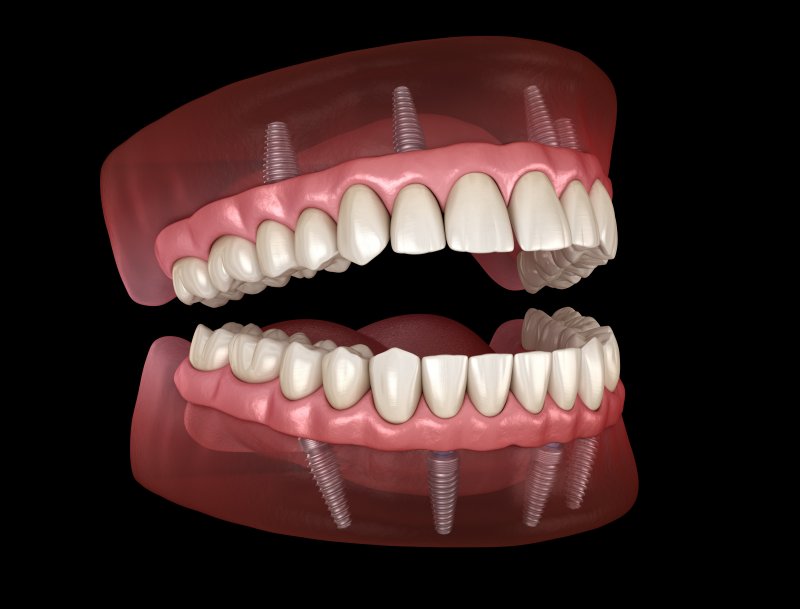
Dentures can be an excellent way for many people to restore their smiles after extensive tooth loss, but traditional restorations sometimes leave a lot to be desired. Conventional dentures will lose their fit over time due to the changing shape of the mouth, which can lead to discomfort as well as difficulty speaking and eating. Here’s how anchoring your dentures with dental implants can give you a powerful and permanent bite as well as a guide to how they are placed.
Why Are Implant Dentures Better?
Traditional dentures require elaborate nightly cleaning rituals to stay in good shape, and they can usually last for seven years at most if they receive excellent care. Since dentures do not address the issue of jawbone atrophy caused by tooth loss, the mouth will continue to change shape and eventually make it difficult for the dentures to fit properly. Replacing these appliances can cost thousands of dollars, and bone loss in the jaw can eventually leave the patient’s face with a sunken appearance.
Dental implants, on the other hand, require only the same oral hygiene regimen as natural teeth, and they can last a lifetime if they receive excellent care. Since these devices provide the jawbone with the exercise it needs to stay healthy, the restorations they support will not have to be replaced frequently if they are well-maintained. This can potentially save the patient much money and help them maintain a youthful profile for many years.
How Are Implant Dentures Placed?
The process of placing dental implants takes several months. A suitable candidate for the treatment will have strong jawbones and be free from oral infections, but these issues can often be addressed with restorative work and gone grafts. Once you are cleared for the treatment, you’ll receive dental implants through a painless and minor surgical procedure. Your appliances will need a few months after that to fuse with your jaw through the natural process of osseointegration.
While recovering after implant surgery, you’ll need to strictly adhere to your dentist’s aftercare instructions to keep your healing process on track. These directions will probably include items like sticking to a soft diet, taking medication as instructed, and refraining from tobacco and alcohol use.
After your mouth has healed, you will be scheduled for a minimally invasive procedure that will place abutment pieces on top of your dental implants. A few weeks later, your customized set of dentures will be anchored to your abutments, and there should be no extensive recovery afterward. While you will probably need some time to get used to chewing and speaking with your implant dentures, your new teeth should feel increasingly natural as time goes on.
Dental implants have allowed countless patients to enjoy healthier and more comfortable smiles that last for life. Consulting with your dentist can help you find the best way to replace your lost teeth.
About the Author
Dr. Ashraf Seif earned his dental degree at the Loma Linda School of Dentistry and attended the prestigious Pikos Institute for dental implant training. He proudly serves as a member of the American Dental Association and the Texas Dental Association. His office in Baytown offers general, restorative, cosmetic, and emergency dentistry as well as implant services. To learn more about the dental implant placement process, contact his office online or dial (281) 837-9122.
